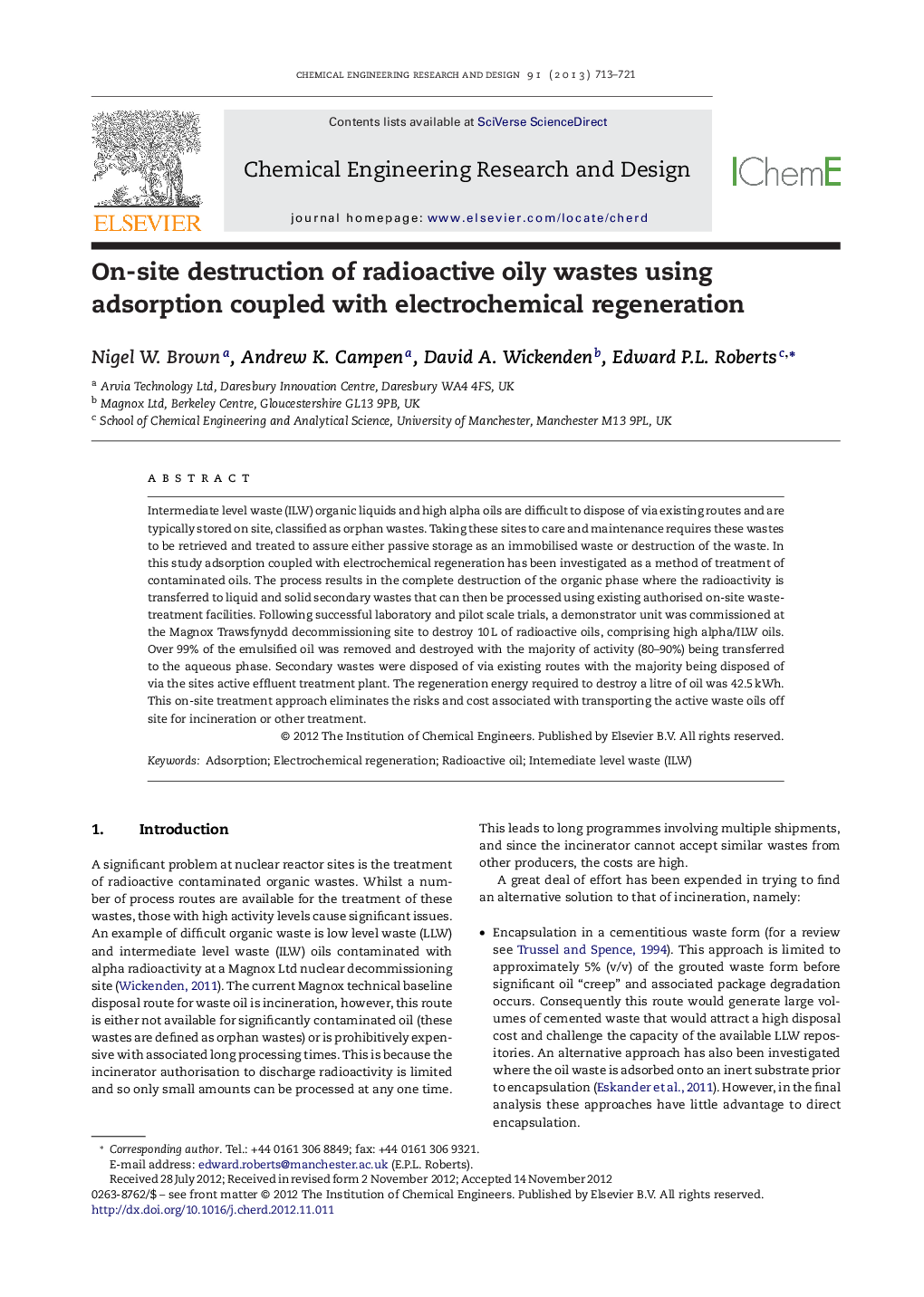| Article ID | Journal | Published Year | Pages | File Type |
|---|---|---|---|---|
| 621252 | Chemical Engineering Research and Design | 2013 | 9 Pages |
Intermediate level waste (ILW) organic liquids and high alpha oils are difficult to dispose of via existing routes and are typically stored on site, classified as orphan wastes. Taking these sites to care and maintenance requires these wastes to be retrieved and treated to assure either passive storage as an immobilised waste or destruction of the waste. In this study adsorption coupled with electrochemical regeneration has been investigated as a method of treatment of contaminated oils. The process results in the complete destruction of the organic phase where the radioactivity is transferred to liquid and solid secondary wastes that can then be processed using existing authorised on-site waste-treatment facilities. Following successful laboratory and pilot scale trials, a demonstrator unit was commissioned at the Magnox Trawsfynydd decommissioning site to destroy 10 L of radioactive oils, comprising high alpha/ILW oils. Over 99% of the emulsified oil was removed and destroyed with the majority of activity (80–90%) being transferred to the aqueous phase. Secondary wastes were disposed of via existing routes with the majority being disposed of via the sites active effluent treatment plant. The regeneration energy required to destroy a litre of oil was 42.5 kWh. This on-site treatment approach eliminates the risks and cost associated with transporting the active waste oils off site for incineration or other treatment.
► Treatment of radioactive oils by adsorption/electrochemical oxidation is evaluated. ► Oxidation of high alpha/ILW oils was demonstrated. ► Energy consumption was in the range 43–93 kWh L−1 of oil treated. ► The oil was destroyed and 80–90% of radioactive species moved into an aqueous phase. ► Tritium gaseous discharges are found to be negligible.
